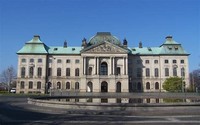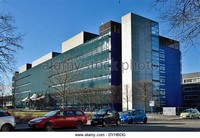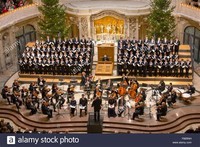Facts about Dresden

The treaty of Dresden in 1745, between Prussia, Saxony, and Austria, ended the second Silesian War and confirmed Silesia as Prussian.

Dresden has numerous research institutes, working in the fields of micro- and nanoelectronics, transport and infrastructure systems, material and photonic technology, and bio-engineering.

During World War II (1939-1945), Dresden was attacked seven times between 1944 and 1945.

Dresden is also home to a military subdistrict command but no longer has large military units.

Before World War II, Dresden was called "Elbflorenz" (Florence of the Elbe).

The incorporation of neighboring rural communities over the past 60 years has made Dresden the fourth largest urban district by area in Germany after Berlin, Hamburg, and Cologne.

Dresden is home to the Regional Commission of the Dresden Regierungsbezirk, which is a controlling authority for the Saxon Government, and has jurisdiction over eight rural districts, two urban districts, and the city of Dresden.

Dresden, as an urban center, has developed faster than most other regions, but the city faces numerous social and economic problems.

Dresden is the capital of Saxony, which is one of Germany's 16 states, known in German as Lдnder.

The Dresden weather station is at Klotzsche, which at 227 meters above sea level, and is 1-3°C colder than in the inner city.
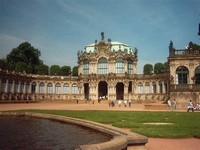
In 2006, Dresden sold its publicly subsidized housing organization, WOBA Dresden GmbH, to the US-based private investment company Fortress Investment Group.

Dresden has some 13,000 cultural monuments enlisted and eight districts under general preservation orders, as well as numerous museums.
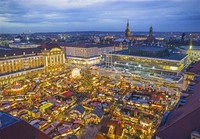
Alongside Leipzig, Dresden is one of the 10 fastest growing cities in Germany.

The bombing of Dresden by the Royal Air Force and by the United States Air Force between February 13 and February 15, 1945, remains one of the more controversial Allied actions.

Dresden has a cold, moderate-to-continental climate in which summers are hotter and winters are colder than the German average.

Greater Dresden, which includes the neighboring districts of Kamenz, MeiЯen, Riesa-GroЯenhain, Sдchsische Schweiz, WeiЯeritzkreis and part of the district of Bautzen, has a population of around 1,250,000.
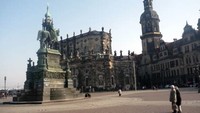
After 1270, Dresden became the capital of Margrave Henry the Illustrious (1215-1288).

Dresden became an industrial center in the German Democratic Republic with a great deal of research infrastructure.

Dresden has a local court, a trade corporation, a Chamber of Industry and Trade, and many subsidiaries of federal agencies, such as the Federal Labour Office or the Federal Agency for Technical Relief.

Linear Pottery culture tribes of the Neolithic era settled the Dresden area in approximately 7500 B.C.E.

The development of the city of Dresden is considered an outstanding example of land use, integrating baroque architecture and gardens and parks.

Dresden has a large tramway network but no subway since the geological bedrock does not allow the building of underground railways.

Dresden has the Rudolf-Harbig-Stadion, the Heinz-Steyer-Stadion and the Freiberger Arena (for ice hockey).

Dresden has raised its per capita GDP to equal to that of some poorer West German communities.

Entertainment includes the Saxon State Opera, the Dresden State Theatre, the Dresden State Operetta, and the Hercules Club, an important site for German-speaking political cabaret.

Dresden is connected in the InterCityExpress and EuroCity train network, with services to Berlin, Prague, Frankfurt, Hamburg, Budapest and Vienna.

Dresden has a long history as the capital and royal residence for the Electors and Kings of Saxony, who furnished the city with cultural and artistic splendor.
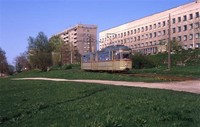
From 1985 to 1990, the Soviet Union KGB stationed Vladimir Putin, the future President of Russia, in Dresden.

Beginning in 1990 with German reunification, Dresden has re-emerged as a cultural, political, and economic center in the eastern part of the nation.

Dresden Airport is an international airport of Dresden, located at the northwestern outskirts of the town.

During the Napoleonic Wars (1803-1815) the French emperor made it a base of operations, winning the Battle of Dresden on August 27, 1813.

Dietrich, Margrave of Meissen (1162-1221) chose the settlement as his interim residence in 1206, when the place was recorded as "Civitas Dresdene."
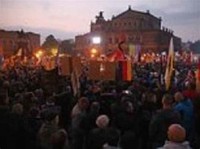
Dresden activists and residents joined demonstrations demanding the removal of the non-democratic government of the German Democratic Republic.

Dresden is the 15th-largest city in Germany in terms of inhabitants, with 508,351 in 2007.

Opponents of the sale were concerned about Dresden's loss of control over the subsidized housing market.

The Higher Regional Court of Saxony has its home in Dresden, and most of the Saxon state authorities are located there.
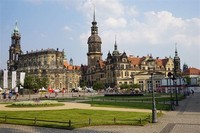
The name Dresden derives from the Old Sorbian Dreћ?any, meaning people of the riverside forest, referring to the valley in which the city was built.

Dresden's elected council is headed by a Supreme Burgomaster, who is directly elected for a term of seven years.

The Technische Universitдt Dresden with almost 35,000 students, was founded in 1828 and is among the oldest and largest Universities of Technology in Germany.

On October 3, 1989, a convoy of trains carrying East German refugees from Prague passed through Dresden on its way to the Federal Republic of Germany.

The controversial bombing of Dresden in World War II by the British Royal Air Force and American Army Air Corps in 1944 destroyed the city.

Restoration of the Dresden Frauenkirche ("Church of Our Lady"), a landmark symbol of reconciliation between former warring enemies, was completed in 2005, a year before Dresden's 800th anniversary.







